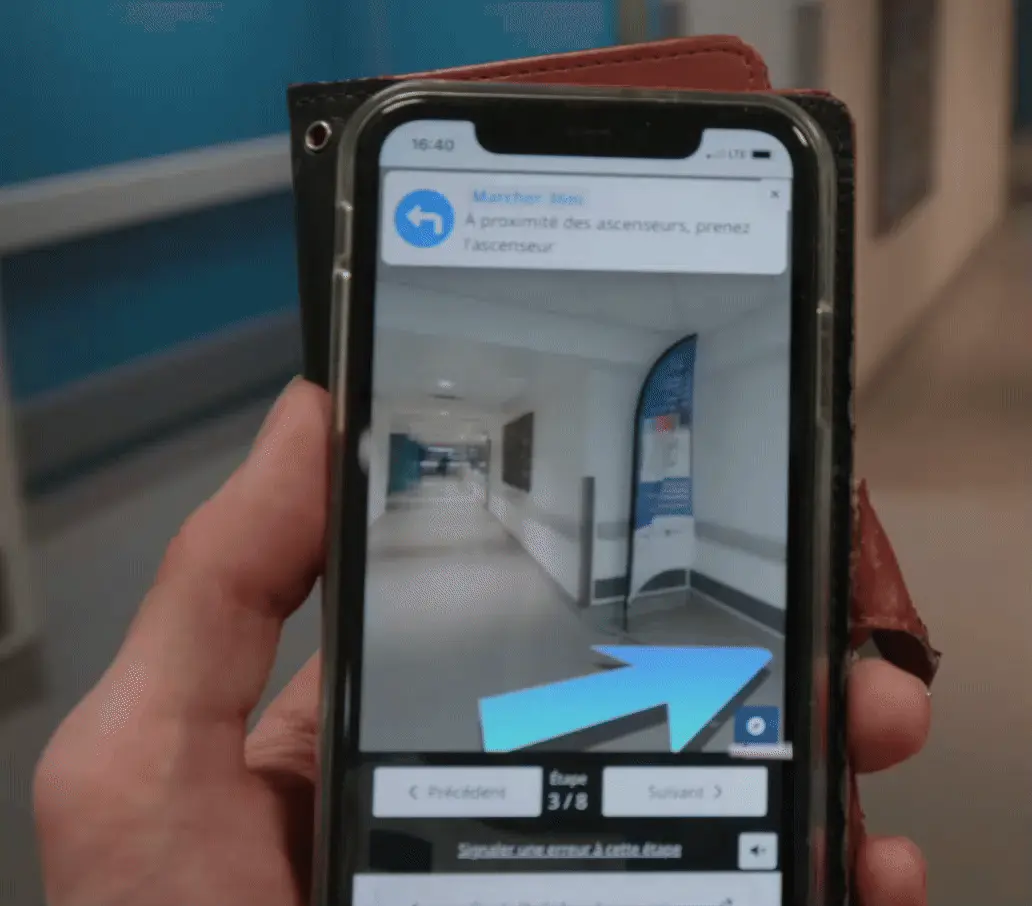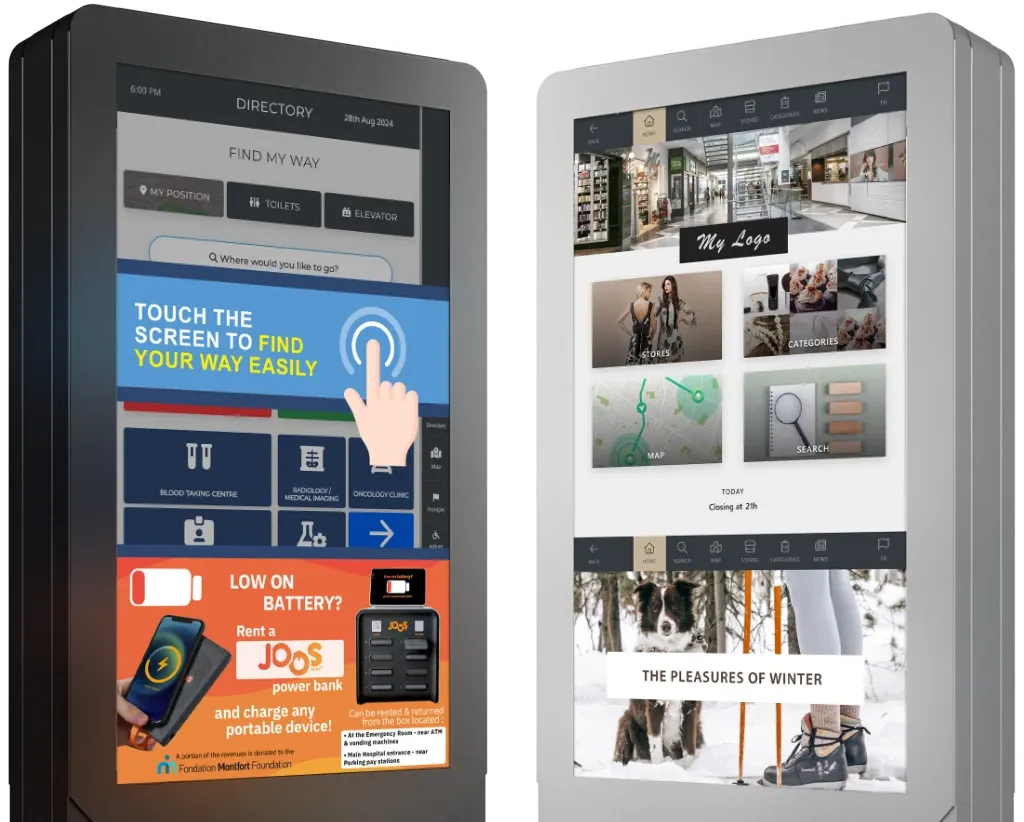In a world where technology guides every step we take outdoors, it’s surprising how many indoor environments still rely on static floor maps and printed signs. We’re used to having Google Maps in our pocket, with real-time updates, turn-by-turn voice guidance, and smooth rerouting when we take a wrong turn.
So why should indoor navigation be any different?
Thanks to the rise of 3D wayfinding, mobile wayfinding, and indoor positioning systems (IPS), the traditional map-on-a-wall has officially entered retirement. Whether you're managing a hospital, a shopping mall, a corporate campus, or a convention center, upgrading to a modern digital wayfinding solution is no longer optional—it’s expected.
Let’s dive into the evolution of indoor navigation, the limitations of traditional methods, and why interactive wayfinding kiosks and mobile-based IPS are now essential tools for any large facility.
 🗺️ The Era of Static Wayfinding: Useful, but Limited
🗺️ The Era of Static Wayfinding: Useful, but Limited

The earliest indoor wayfinding systems were little more than enhanced wall directories. Even the first interactive kiosks improved only slightly on the printed map—they allowed touch interaction, but offered no real-time updates or mobile connectivity.
These static digital maps typically included:
- A “You are here” indicator
- A zoomable floor plan
- A button to highlight your destination
That’s it.
While this worked for smaller facilities or low-traffic areas, it fell short in more complex environments like airports, hospitals, and sprawling shopping centers.
Why?
Because traditional digital wayfinding lacks:
- Real-time location tracking
- Dynamic route adjustment
- Voice-guided navigation
- Mobile integration
- Accessibility features
- Analytics or insights for management
Users are left to visually memorize a route, walk away from the kiosk, and hope they took a mental screenshot.
Let’s be honest: we don’t do that outside, so why should we indoors?

🚀 Enter the Next Generation: Smart 3D Wayfinding with IPS
Today, 3D wayfinding systems powered by indoor positioning technologies are transforming how people move through complex indoor environments.
These new solutions combine:
- 3D interactive maps
- Real-time indoor positioning
- Turn-by-turn guidance
- Mobile phone continuity
- Voice instructions
- Accessibility features
- Multi-floor navigation
- Integration with digital signage and facility management systems
It’s not just navigation—it’s an experience.
🔍 What is 3D Wayfinding?
3D wayfinding refers to interactive navigation systems that use three-dimensional maps to guide users inside buildings. Unlike flat 2D layouts, maps with 3D augmented reality images offers more realistic, visually engaging, and easy-to-understand environments. They can include:
- Realistic renderings of floors, walls, escalators, elevators, and rooms
- Animations of movement (e.g., walking footprints or arrows)
- Rotatable and zoomable views
- Icons and overlays for services, events, or alerts
Combined with real-time tracking from an indoor positioning system (IPS), this creates a GPS-like experience—but optimized for indoor spaces where traditional satellite GPS fails.
📱 From Interactive Kiosks to Your Smartphone: Mobile Wayfinding Without the App Store
One of the biggest innovations in indoor navigation is the seamless handoff from wayfinding kiosks to users’ mobile phones.
Here’s how it works:
- A visitor approaches an interactive digital kiosk at the entrance.
- They search for their destination (e.g., Room 201B, Pediatrics, or Starbucks).
- The kiosk displays a 3D path from their current location.
- The user scans a QR code on the screen.
- The navigation continues on their mobile browser—no app download needed!
From there, the user can get real-time positioning, voice instructions, and step-by-step directions directly on their phone as they walk through the building.

🧭 Benefits of Mobile Indoor Navigation:
- No app store friction
- Real-time updates
- Touchless and hygienic
- Accessible via any smartphone
- Voice-assisted for users with disabilities
- Supports multi-language instructions
- Works seamlessly across multiple floors and buildings
This approach ensures continuity, accessibility, and ease of use for first-time visitors, international guests, and those with mobility challenges.

🏥 Real-World Applications of Modern Wayfinding
Hospitals and healthcare centers
Hospitals are among the most complex indoor environments. They are often spread across multiple buildings and wings with naming conventions that aren’t intuitive. Visitors may be stressed or in a hurry, making easy navigation essential.
3D wayfinding in hospitals provides:
- Turn-by-turn directions to appointments
- Wheelchair-friendly routes
- Integration with appointment systems
- Voice guidance for low-vision users
- Emergency alerts displayed on the route
Shopping malls and retail centers
In large malls, mobile wayfinding helps shoppers quickly find stores, food courts, restrooms, and parking exits. It also integrates with digital signage to promote current sales or display personalized promotions.
Airports and transit hubs
Indoor navigation systems guide passengers through terminals, to gates, lounges, baggage claim, or customs. It can also display estimated walking times and gate changes in real-time.
Universities and corporate campuses
New students or visitors can easily get lost in large educational or corporate complexes. Interactive kiosks combined with mobile wayfinding offer a much better onboarding experience.

🔄 Why Static Maps Just Don’t Cut It Anymore
Here’s what modern users expect, and where static wayfinding fails:
FeatureStatic Map3D WayfindingReal-time positioning❌✅Turn-by-turn guidance❌✅Voice navigation❌✅Mobile continuity❌✅Multi-floor navigation⚠️ Manual✅ AutoVisual animations❌✅Accessibility options❌✅QR code handoff❌✅Data analytics❌✅
The benefits of 3D wayfinding software go far beyond helping users.
📊 Facility Insights & Analytics
Modern wayfinding systems can capture data such as:
- Most searched destinations
- Foot traffic heat maps
- Drop-off points in navigation
- Time spent navigating
This helps management optimize building layouts, adjust signage, and improve user experience.

🔧 Easy Updates
With cloud-based wayfinding software, administrators can:
- Update maps in real time
- Change routing logic
- Highlight closures or detours
- Push promotions to specific zones
Compare that to reprinting static maps or reprogramming every kiosk manually.

🌐 Integrations That Make a Smart Building Smarter
Modern indoor navigation solutions can integrate with:
- Digital signage networks to sync directions with promotions
- CRM and appointment systems for personalized routing
- Accessibility tools (e.g., screen readers, text-to-speech)
- Security systems for emergency evacuations
- Facility management software to streamline maintenance requests
This makes the wayfinding system a central part of your smart building ecosystem.

🧭 Choosing the Right Wayfinding Software
When selecting a 3D wayfinding platform, look for:
- Cloud-based content management
- Drag-and-drop route editing
- Support for beacons, Wi-Fi triangulation, and sensor-less IPS
- Scalable architecture for multiple buildings
- Support for browser-based mobile access (no app required)
- Photorealistic 3D visualizations with branding options
- Analytics dashboard
- Accessibility compliance
Platforms like Eye-In Media offer a complete solution combining all of the above.

📣 Final Thoughts: Wayfinding That Moves With You
The future of wayfinding is dynamic, mobile-first, and intelligent. Static maps and even basic digital kiosks are being replaced by interactive maps with 3D imaging, indoor positioning systems, and mobile navigation without app downloads.
This isn’t just about technology—it’s about creating better user experiences, improving operational efficiency, and managing your facility smarter.
Whether you’re responsible for a hospital, shopping center, airport, campus, or government building, it’s time to rethink what wayfinding means in the 2020s.
Don’t let your visitors get lost. Guide them—with Intelligence.
🧭 Start your 3D wayfinding journey today.
Explore the latest in indoor navigation technology with browser-based mobile guidance, real-time positioning, and voice navigation—no app required.





